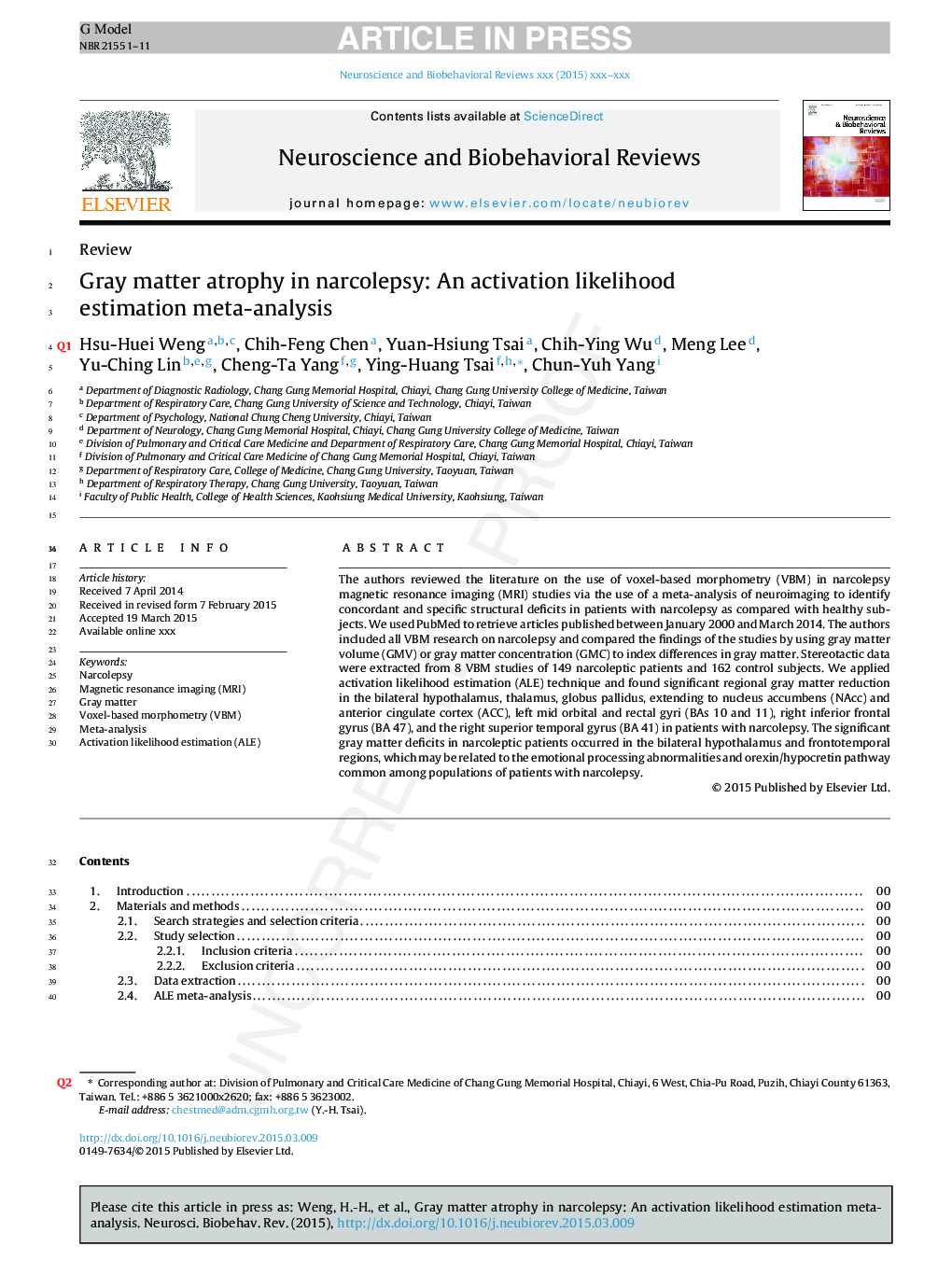| Article ID | Journal | Published Year | Pages | File Type |
|---|---|---|---|---|
| 7303155 | Neuroscience & Biobehavioral Reviews | 2015 | 11 Pages |
Abstract
The authors reviewed the literature on the use of voxel-based morphometry (VBM) in narcolepsy magnetic resonance imaging (MRI) studies via the use of a meta-analysis of neuroimaging to identify concordant and specific structural deficits in patients with narcolepsy as compared with healthy subjects. We used PubMed to retrieve articles published between January 2000 and March 2014. The authors included all VBM research on narcolepsy and compared the findings of the studies by using gray matter volume (GMV) or gray matter concentration (GMC) to index differences in gray matter. Stereotactic data were extracted from 8 VBM studies of 149 narcoleptic patients and 162 control subjects. We applied activation likelihood estimation (ALE) technique and found significant regional gray matter reduction in the bilateral hypothalamus, thalamus, globus pallidus, extending to nucleus accumbens (NAcc) and anterior cingulate cortex (ACC), left mid orbital and rectal gyri (BAs 10 and 11), right inferior frontal gyrus (BA 47), and the right superior temporal gyrus (BA 41) in patients with narcolepsy. The significant gray matter deficits in narcoleptic patients occurred in the bilateral hypothalamus and frontotemporal regions, which may be related to the emotional processing abnormalities and orexin/hypocretin pathway common among populations of patients with narcolepsy.
Keywords
Related Topics
Life Sciences
Neuroscience
Behavioral Neuroscience
Authors
Hsu-Huei Weng, Chih-Feng Chen, Yuan-Hsiung Tsai, Chih-Ying Wu, Meng Lee, Yu-Ching Lin, Cheng-Ta Yang, Ying-Huang Tsai, Chun-Yuh Yang,
